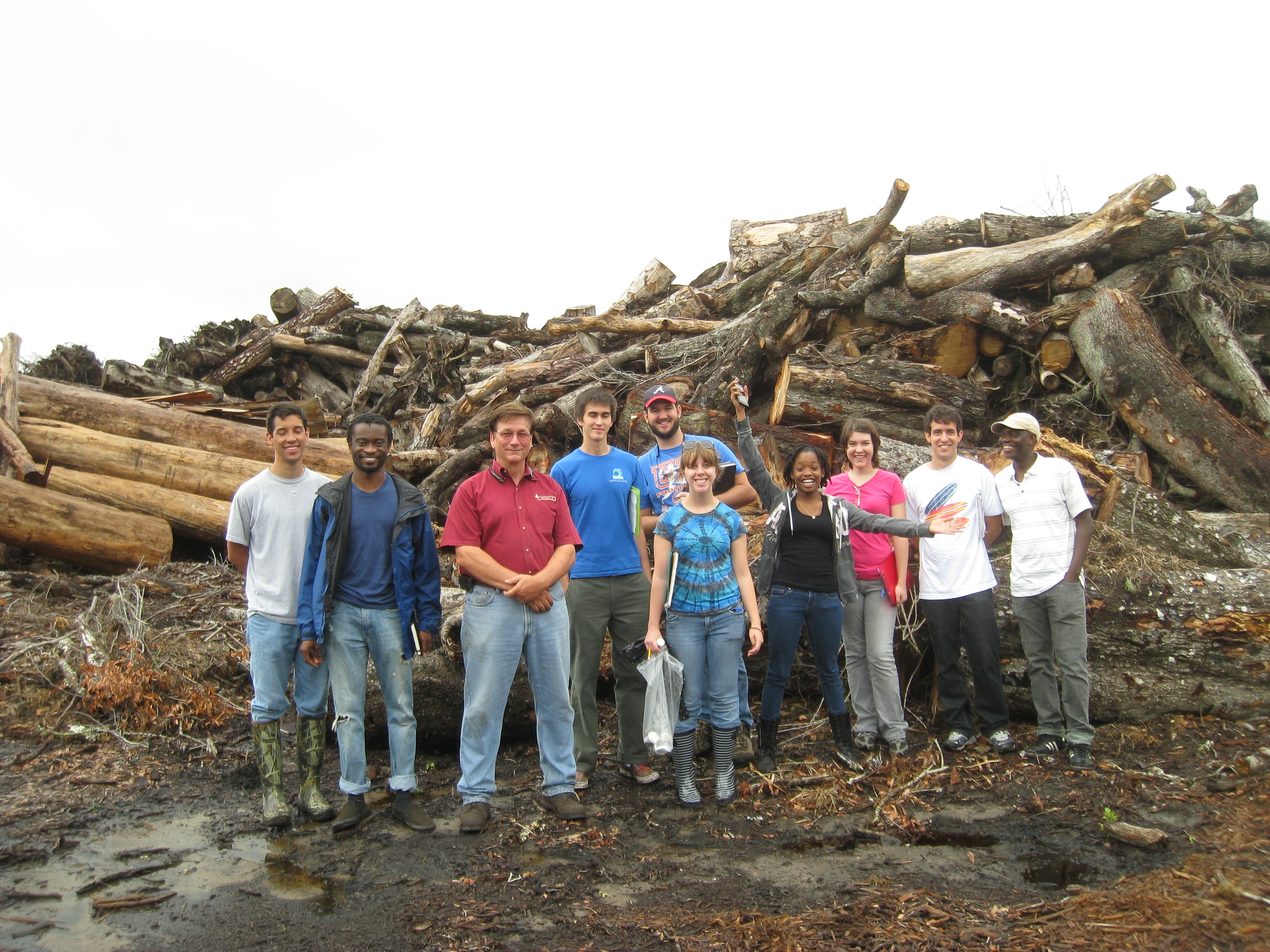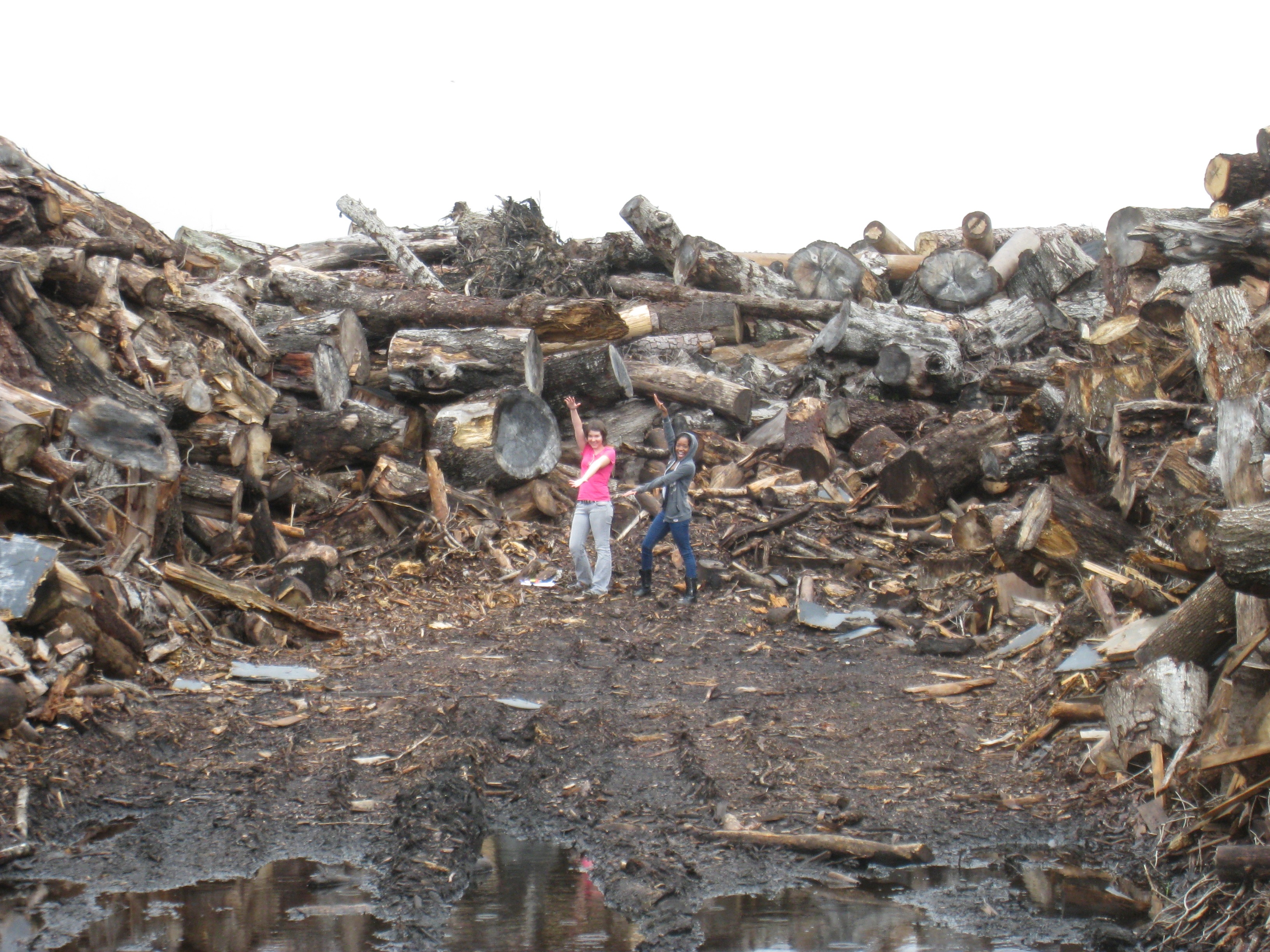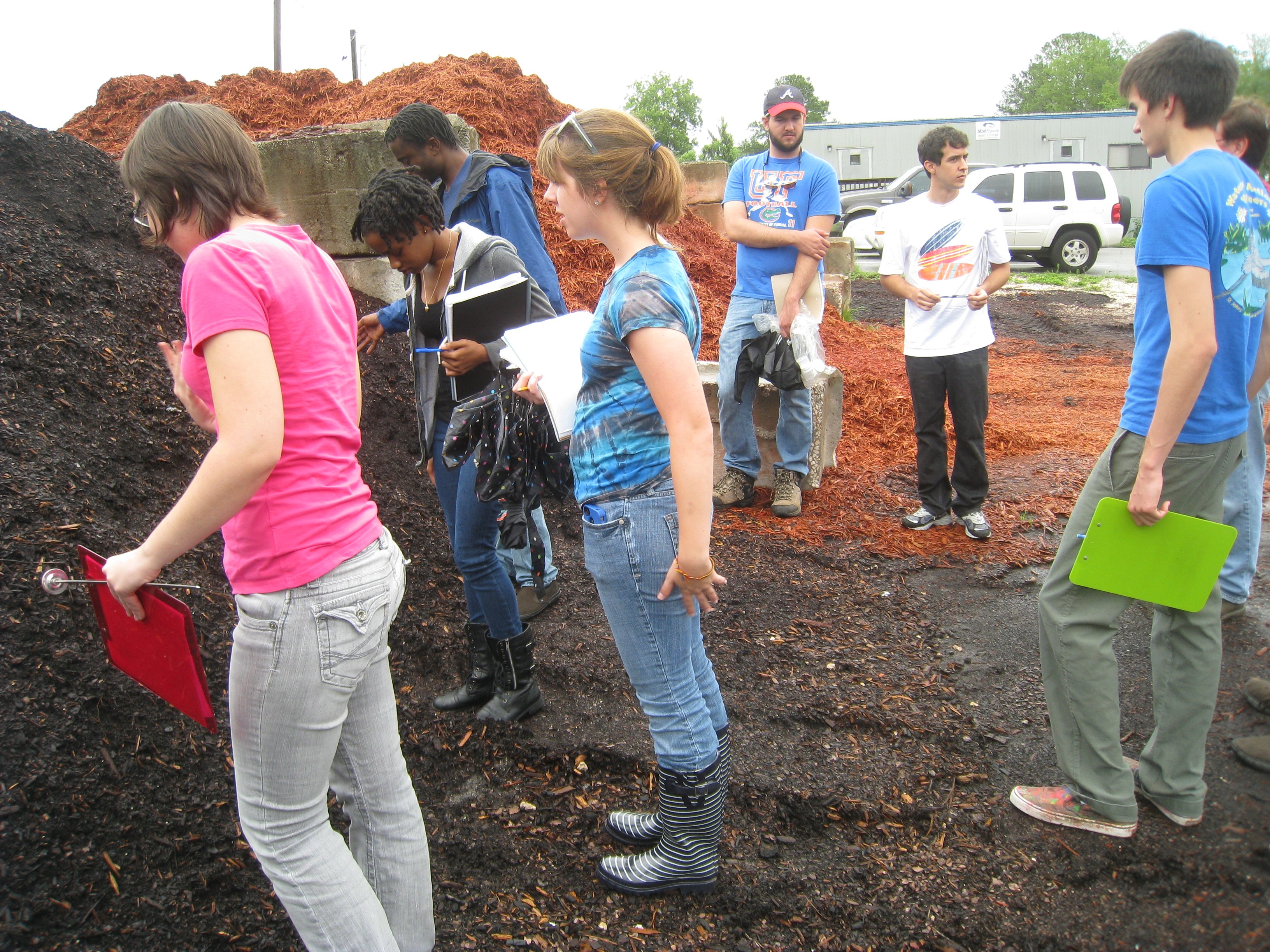Wood Resource Recovery
June 1, 2012
Ocala, FL
Author: Adrian Brene
Website

The bioenergy interns visited Levin Gaston of Wood Resource Recovery in order to experience a commercial-scale composting and wood-recycling project. The tour included composting, processing, and more recently, preparation for biomass incineration for the new GRU biomass plant (coming online in late 2013). WRR collects wood waste (downed trees, limbs and debris) from surrounding areas, and depending on the nature of the wood, undergoes mulching, composting, or storage.

Wood resource recovery LLC began in 1985, when each day 100 tons of wood debris were loaded onsite per day. When the cost of sending loads to the landfill increased, the site began performing mass burnings, but these soon became locally banned. The company then began to stack debris on 20 acres of land for incineration, but a large fire led the company to switch to wood recycling (producing a mulch product) instead. Wood resource recovery provides several grades of mulch and soil amendments as well as a potting soil blend popular with plant nurseries. Additionally, they now have a contract to provide woody biomass to GRU in order to help supply the 100 MW Gainesville biomass plant. Over the last few years WRR has begun to take in and process septic tank sludge and use it to fertilize hay fields for cattle grazing.

The site has various compost piles of differing qualities, as well as differing wood scraps and logs. Wood that cannot be used for the new plant undergoes either mulching or composting. WRR takes in horse bedding from stalled horses in Marion County for composting. Levin uses drip irrigation running along the top of his compost mounds to keep his high carbon compost moist. When we dug into the pile, steam rose and fungal mycelia were visible throughout. The resulting mulch and compost is then sold for landscaping and planting. WRR hopes to compost food waste in the future and has had several experimental runs with locally collected food waste from area business.
The importance of taking wood waste and using it instead of sending it to landfill or other non-useful application cannot be understated. Levin even told us that typically more woody waste (tree debris) is produced in urban settings than in a forest setting. Woody matter can be resold as mulch, compost, or undergo pyrolysis or gasification to extract energy (and biochar). The amount of wood waste that goes to landfills each year is enormous; converting this waste into energy or other high-utility products (biochar or mulch) will not only improve the landfill situation, but also cut back on carbon emissions, and has global implications for both long and short term sustainability.